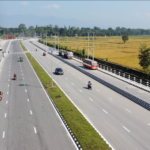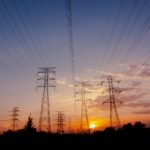Nepal, located in the Himalayas, is naturally endowed with abundant water resources. In addition to these resources, the Himalayan rivers, due to their steep gradient, provide great potential for the generation of hydroelectricity. And along with the steep topography, fragile geology and intense rainfall have led to large flow volume and exceedingly high sediment transport in these rivers during the rainy season. This large flow volume has provided large potential for hydropower development. However, due to the seasonality of rainfall variability, while electricity generation is at full capacity during the monsoon rains, it reduces to a minimum during the dry winter period. The variability of flow also poses a challenge to many hydropower plants with respect to complete sediment exclusion at headworks and severe sand erosion of turbines leading to a loss in energy generation. Despite these obstacles and due to the natural advantages, Nepal has greatly developed its hydropower infrastructure over the years and has a long way to go, as is discussed in this article.
The Past
Though Nepal has a history of generating hydroelectricity starting with the first power plant in Pharping established some 110 years ago, it was only from the 1980s that the country saw a gradual and consistent rise in hydro-development installed capacity both from the government as well as the private sector. However, due to the lack of proper planning and implementation of phase-wise hydropower development during the first two decades of the early 2000s, Nepal faced a severe energy crisis leading to load shedding of up to 18 hours in a day. Because of this energy crisis, hydropower development became a hot agenda among the government, political parties, development organizations and citizens. The sector was seen as a potential source to power the country as well as bolster Nepal’s struggling economy. And this interest resulted in a sudden rise of private sector participation in the hydropower industry over the last two decades which was bolstered by access and incentives provided by the government.
The Present and the Future
Currently, a total of close to 3000MW of installed capacity is already in operation. This constitutes only about 7% of the techno-economical potentiality of Nepal’s hydropower development. At present, Nepal is intending to prioritize its use of hydropower primarily for internal consumption like in energy-intensive industries as well as for the large-scale usage of electric vehicle charging stations and electric cooking. Only then is it prioritizing the export of electricity. For this, it has an ambitious pipeline of projects under preparation and development which includes under-construction hydro installations of more than 7000 MW that are expected to come into operation in the next six to eight years.
Regional Connectivity
Though the current installed capacity of hydropower is around 3000MW, the internal demand for consumption hovers slightly below 2000 MW. Thus, there is a surplus power, part of which has been evacuated through existing high voltage cross-border transmission lines to India. To add to the existing power trade, as of now, India has agreed to buy around 631 MW of power from Nepal as per the Government of India Guideline for Import/Export of Electricity (Cross Border) 2018 and Central Electricity Regulatory Commission (Cross Border Trade of Electricity) Regulations, 2019.
It is these recent guidelines and regulations that have allowed India to facilitate the building of dynamic and robust electricity infrastructure, promote transparent regulatory mechanisms and create reliable grid operation and transmission for the import and export of electricity between the country and its neighbors, including Nepal. In the context of Nepal, this has been further highlighted in a recent endorsement by the Indian cabinet to purchase 10 GW of power in 10 years from Nepal.
Additionally, the regulation mentioned above also has a provision of trilateral power trade, leading to the potential export of power from Nepal to Bangladesh via the Indian grid. As a result of the tripartite agreement, Nepal is at the advanced stage of exporting an initial 50 MW of hydropower to Bangladesh. Once this materializes, Nepal would be in a beneficial position to export power not only to India but also to other regional countries via India. This is a significant development as it creates a huge market for Nepali hydropower with Bangladesh itself willing to procure close to 9000 MW of hydropower energy to meet its future demand through the usage of clean energy.
The Need for Regional Connectivity in Hydropower
As is common knowledge, we are currently observing the major impact of climate change around the world. In the context of South Asia, among the various ramifications of climate change, the most obvious one has been a rise in unprecedented rainfall in the Himalayan region over the last few years which has led to excessive flooding and subsequent damages. In order to combat climate change and its consequences, a global shift to renewable energy is of paramount importance. To support the global cause for the development of renewable energy as well as individual countries’ quest to reach Net Zero Emissions in the next 30 to 40 years, the development of hydropower and other clean energy is absolutely imperative.
In the Indian subcontinent, countries are still highly reliant on non-clean energy with India using huge amounts of fossil fuels to drive its industry and economy and Bangladesh similarly using natural gas. Only Nepal and Bhutan have a predominantly huge potential of hydropower development – more than what the country may need – that can be tapped into to combat the effect of climate change.461 Thus, it is a win-win situation in the region to supply hydropower-generating-energy from Nepal and Bhutan to India and Bangladesh. However, at present, these cross-border interconnecting transmission lines have a limited capacity for power evacuation and trade. Therefore, it is essential for these countries to set up a number of high voltage cross-border transmission access points for regional integrated grid connectivity.
Pratik Pradhan is the Vice President of Business Development and Project Function at Butwal Power Company. With over 25 years of experience, he specializes in planning, developing, and implementing hydropower projects. Pradhan has been instrumental in various projects including the Kabeli A Hydroelectric Project, Nyadi Hydropower Project, Lower Manang Marsyangdi Hydropower Project, and Chino Hydropower Project.





